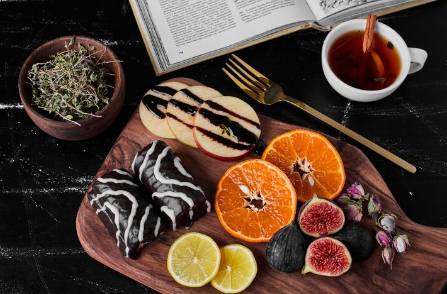In the world of spirits, where mass production often overshadows character, there exists a category of libations that tells a story—a narrative of terrain, tradition, and the patient passage of time. Among these storied bottles, the name Žižole emerges not with a shout, but with a whisper of orchard breezes and the deep, resonant pride of European craftsmanship. This is not merely a fruit brandy or a liqueur; it is a liquid testament to a specific place and the people who have cultivated its flavors for generations. Hailing from a region where the craft of distilling ripe, sun-warmed fruit is a deeply ingrained cultural heritage, Žižole represents the pinnacle of this artisanal tradition. Each bottle encapsulates the essence of perfectly ripened plums, cherries, apricots, or pears, transformed through time-honored methods into a spirit of remarkable complexity and soul. This article will serve as your comprehensive guide to the world of Žižole, exploring the meticulous process from orchard to bottle, deciphering the nuanced tasting profile that sets it apart from common fruit spirits, and illuminating the cultural context that makes enjoying a glass of Žižole an experience akin to taking a journey through the very heart of its homeland. We will uncover the traditions that dictate its creation and provide a modern framework for how to savor, pair, and appreciate this exquisite example of liquid craftsmanship.
The Roots of Tradition: Terroir, Harvest, and the Artisanal Production of Žižole
The journey of every bottle of Žižole begins not in a distillery, but in the sun-drenched orchards and fertile valleys of its native region, where the concept of “terroir”—the unique combination of soil, climate, and topography—imparts an unmistakable signature on the fruit. The producers of Žižole often work with heirloom fruit varieties, selected not for their shelf stability or yield but for their depth of flavor, aromatic intensity, and sugar content, which are essential for a quality fermentation and distillation. The harvest is a critical and time-sensitive event, with the fruit being picked at the absolute peak of ripeness to ensure the highest concentration of natural sugars and essential oils. This careful selection is the first and perhaps most crucial step in a process that relies on the quality of its raw ingredients above all else; no amount of skillful distillation can compensate for fruit that is lacking in character or flavor. This deep connection to the land and its seasonal rhythms is a fundamental pillar of the Žižole philosophy, anchoring the spirit firmly in the place from which it comes and ensuring that each sip carries the authentic taste of its origin.
Once the perfect fruit is gathered, it undergoes a transformation guided by methods passed down through generations, blending time-tested techniques with meticulous modern control. The fruit is first crushed and left to ferment naturally, a slow process where wild or cultivated yeasts convert the fruit’s sugars into alcohol, developing a base wine rich with complex esters and nuances. This fermentation is often carried out in traditional open vats or wooden casks, allowing the development of a broader spectrum of flavors than what is possible with tightly controlled industrial yeasts. The resulting fruit wine is then distilled, typically in small batches using copper pot stills. The use of copper is vital, as it interacts with the spirit, removing unwanted sulfur compounds and resulting in a cleaner, more refined final product. The master distiller makes a critical “cut,” separating the desirable “heart” of the distillate from the “heads” and “tails,” which contain impurities and less desirable compounds. For Žižole, this heart is everything—it is the pure, concentrated soul of the fruit. Some expressions may then be aged in neutral or previously used oak casks to mellow and integrate the flavors, while others are bottled relatively young to highlight the vibrant, fresh fruit character. This entire process, from harvest to bottling, is an exercise in patience and respect for the raw material, a craft where the maker’s role is to act as a steward, guiding the fruit to its ultimate expression rather than forcing it into a standardized mold.
The Sensory Experience: Tasting, Appreciating, and Integrating Žižole into Modern Rituals
To experience Žižole is to engage all the senses, moving beyond simply drinking to a form of mindful appreciation that reveals the spirit’s true complexity. The visual examination begins the journey; the spirit is often held in a clear, tulip-shaped glass to concentrate its aromas, and its color can range from the crystal clarity of a young pear brandy to the deep, rich amber of an oak-aged plum variety. The nose, or aroma, is where Žižole first truly reveals itself. By gently swirling the glass, one releases a bouquet that is seldom just a simple note of fruit; a well-crafted Žižole will offer a symphony of scents, including the primary fruit character, but also secondary notes of almond from the stone, hints of spice, a touch of honey, and the underlying clean, alcoholic warmth of the spirit itself. The first sip should be allowed to coat the palate, where the true balance of the spirit is judged. The initial fruit flavor is prominent, but it is supported by a structure of alcohol that should be warming and present, not harsh or burning. The mid-palate may reveal more subtle flavors—vanilla from a brief oak rest, a floral note, or a deeper, almost jammy fruit concentration. The finish, or the aftertaste, is the final signature of a great Žižole, lingering pleasantly and cleanly, inviting contemplation and another sip.
Understanding how to integrate Žižole into contemporary life is key to fully appreciating its versatility. While purists may argue it should only be enjoyed neat at room temperature as a digestif after a meal, there are numerous ways to incorporate it into modern culinary and social rituals. It can be served slightly chilled to subdue the alcohol and accentuate the fruit notes, making it a refreshing aperitif. In the kitchen, Žižole becomes a powerful culinary ingredient; a splash can deglaze a pan for a sophisticated sauce for duck or pork, it can be used to macerate summer fruits for a dessert, or it can be drizzled over vanilla ice cream for a simple yet elegant treat. For the creative mixologist, Žižole offers a superior base for cocktails, adding a depth of authentic fruit flavor that syrups and artificial liqueurs cannot replicate. A Žižole sour, a spritz topped with prosecco and soda, or a simple pairing with tonic water can transform the spirit into a captivating centerpiece for any social gathering. This ability to move seamlessly from a traditional digestif to a modern cocktail component demonstrates the dynamic nature of Žižole and ensures its relevance for a new generation of enthusiasts seeking authenticity and flavor in their glass.
Conclusion
Žižole is far more than a simple alcoholic beverage; it is a narrative in a bottle, a capture of a specific time, place, and tradition. It represents a steadfast commitment to artisanal values in a world increasingly dominated by efficiency and uniformity. From the careful selection of sun-ripened fruit in ancestral orchards to the patient, generations-old distillation process, every aspect of its creation is imbued with a sense of purpose and place. The resulting spirit is a complex and rewarding experience for the senses, offering a taste profile that is both profoundly authentic and delightfully versatile. To choose Žižole is to choose a connection to a rich cultural heritage, to support the preservation of craft, and to indulge in a moment of genuine flavor that stands in stark contrast to the ordinary. It invites you to slow down, to savor, and to appreciate the deep, satisfying pleasure that can only come from a product made with integrity, passion, and an unwavering respect for tradition. In the landscape of fine spirits, Žižole is not just a choice of what to drink, but a statement about how to live—appreciating the depth, story, and craftsmanship in life’s finer moments.
FAQ Section
Q1: What type of spirit is Žižole exactly?
Žižole is a traditional, artisanal fruit brandy (often known as eau-de-vie or rakia) or a fruit liqueur from a specific European region. It is distinguished by its production from fresh, ripe fruit—such as plum, cherry, apricot, or pear—which is fermented, distilled, and then either bottled pure or lightly aged. Its character is defined by the authentic, non-artificial flavor of the base fruit.
Q2: How should I drink Žižole to best appreciate it?
To fully appreciate its nuances, it is best enjoyed neat in a tulip-shaped glass at room temperature or slightly chilled. This allows the complex aromas and flavors to fully express themselves. Sip it slowly as a digestif after a meal. However, it is also versatile enough to be used in cocktails or as a culinary ingredient.
Q3: What is the difference between Žižole and a standard fruit liqueur from the supermarket?
The difference lies in production and ingredients. Mass-produced fruit liqueurs are often made from neutral spirits and artificial flavorings or syrups. Žižole is crafted from real fruit through natural fermentation and distillation, resulting in a cleaner, more complex, and authentic fruit flavor without cloying sweetness or artificial notes.
Q4: Does Žižole have a strong alcohol taste?
A well-made Žižole has a robust alcohol content, typically between 35% and 45% ABV. However, the skill of the distiller ensures that the alcohol is well-integrated, providing a warming sensation that carries the fruit flavors rather than a harsh, burning taste that overpowers them. The quality of the spirit is evident in its smoothness and balance.
Q5: Can I use Žižole in cooking?
Absolutely. Žižole is an excellent culinary ingredient. Its concentrated fruit flavor makes it ideal for deglazing pans to create sauces for meats like duck, pork, or chicken. It can be used in desserts, such as soaking into cakes, poaching fruits, or drizzling over ice cream and pastries, adding a sophisticated and authentic fruit essence to your dishes.


